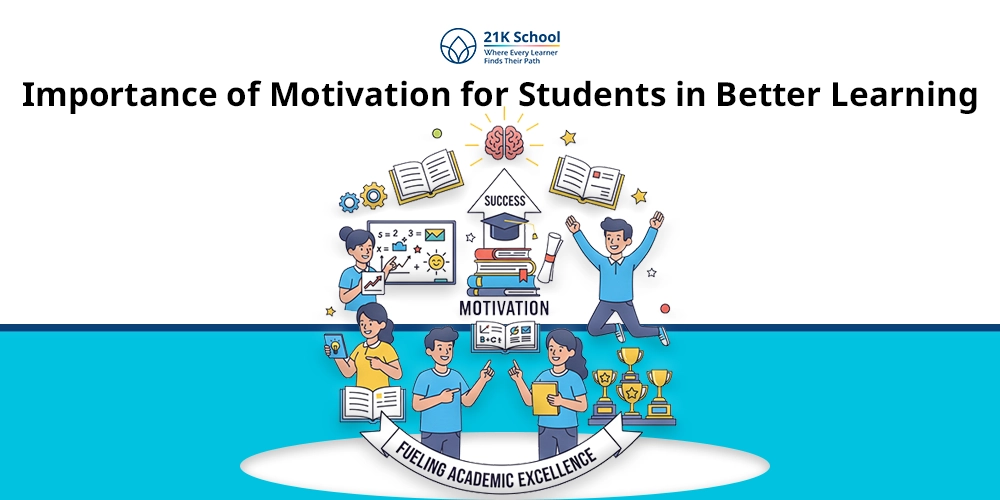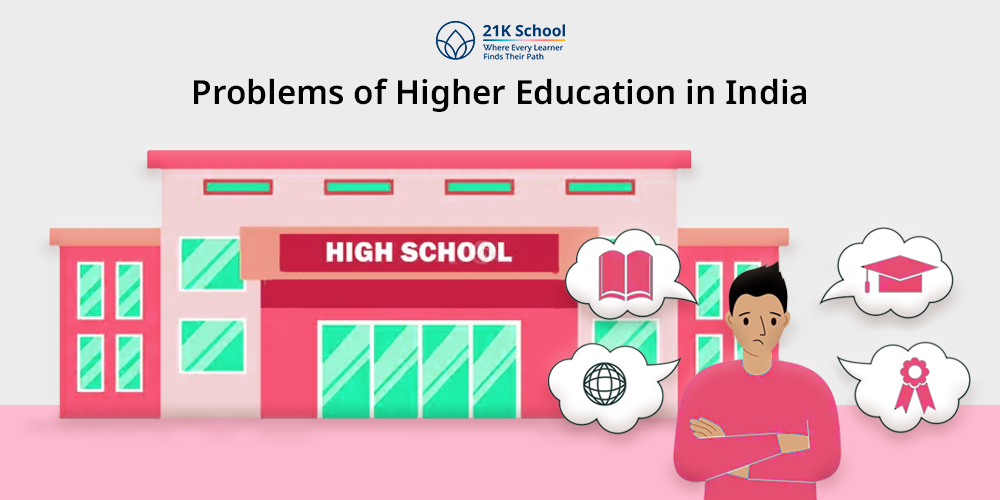
India has made tremendous progress in extending student participation in higher educationhigher education . With thousands of colleges and millions of enrollments, India has developed an impressive educational infrastructure.
But amid these impressive numbers are some serious issues. A large portion of our graduates still lack employability skills, quality education is still very heterogeneous and for all the promises of innovation, we still see very little of it.
For our youth to be adequately prepared to face the challenges of an increasingly globalised world, we need to understand and address the issues surrounding higher education’s integration within Indias education system .
Contents
- 11 Key Problems of Higher Education in India
- 1. Limited Access to Quality Higher Education
- 2. Outdated Curriculum Not Aligned with Industry Needs
- 3. Lack of Qualified and Committed Staff
- 4. Poor Infrastructure in Colleges and Universities
- 5. Weak Industry-Academia Collaboration
- 6. Low Focus on Research, Innovation, and Development
- 7. High Rates of Graduate Unemployment
- 8. Inequality in Access Based on Region, Caste, and Gender
- 9. Regulatory Bottlenecks and Policy Inconsistencies
- 10. Digital Divide Hindering Online Education Expansion
- 11. Affordability
- Brain Drain: Why Talented Students Leave India
- The Need for Reforms in Higher Education Policy
- Role of Technology and Online Platforms in Bridging Gaps
- Conclusion: The Future of Higher Education in India
11 Key Problems of Higher Education in India
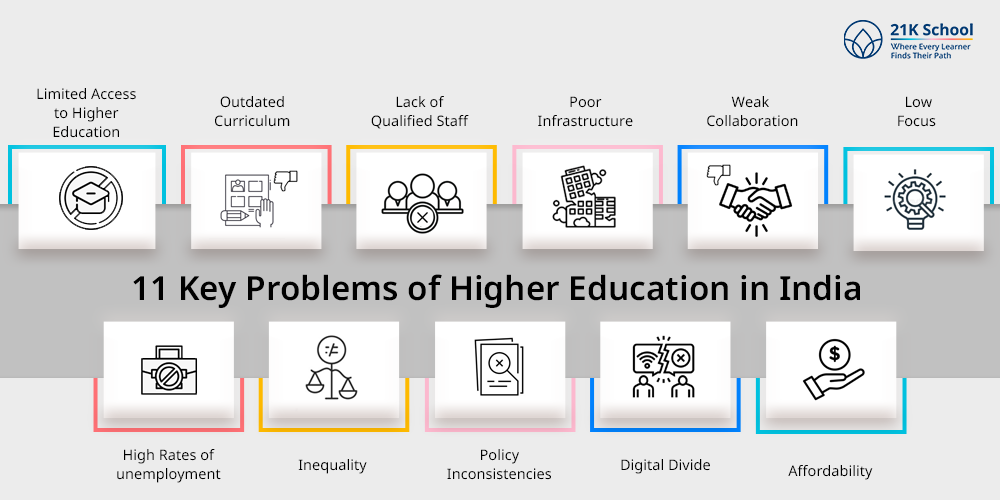
1. Limited Access to Quality Higher Education

Quality education in small towns and other marginalised communities is held back due to a lack of access to institutions that offer robust academics, qualified professors, and good infrastructure.
Even though India has thousands of colleges and universities, the top institutions are all in cities.
Because of this, many inevitably have to migrate, which puts pressure on their finances or makes them settle for a lesser quality education, expanding the gap between those who have opportunities and those who do not.
2. Outdated Curriculum Not Aligned with Industry Needs
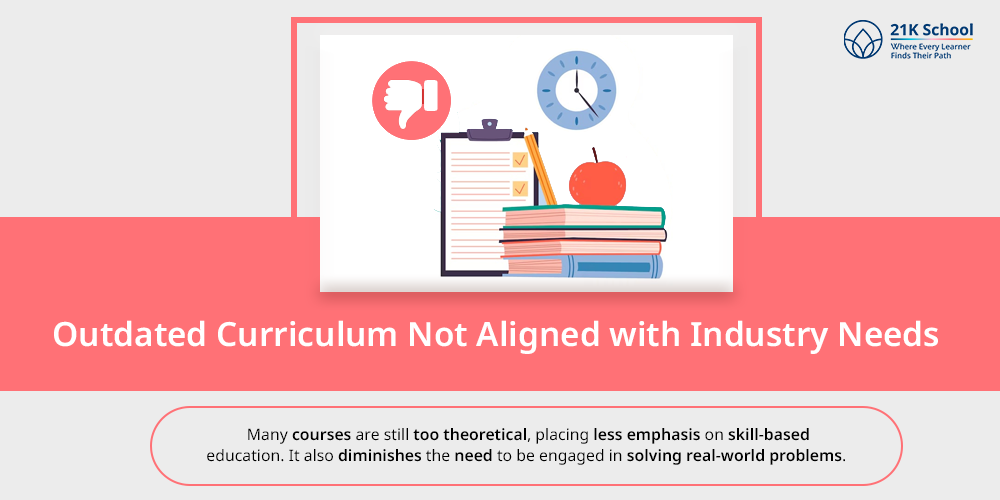
Many universities and colleges continue to operate with syllabi that haven’t changed in over 30 years.
Many courses are still too theoretical, placing less emphasis on skill-based education. It also diminishes the need to be engaged in solving real-world problems.
Youth are finishing programs with degrees and no practical knowledge, rendering most students incompetent to transition into meaningful employment.
The widening gap between market requirements and student exposure seems to be a prime contributor to youth unemployment.
3. Lack of Qualified and Committed Staff
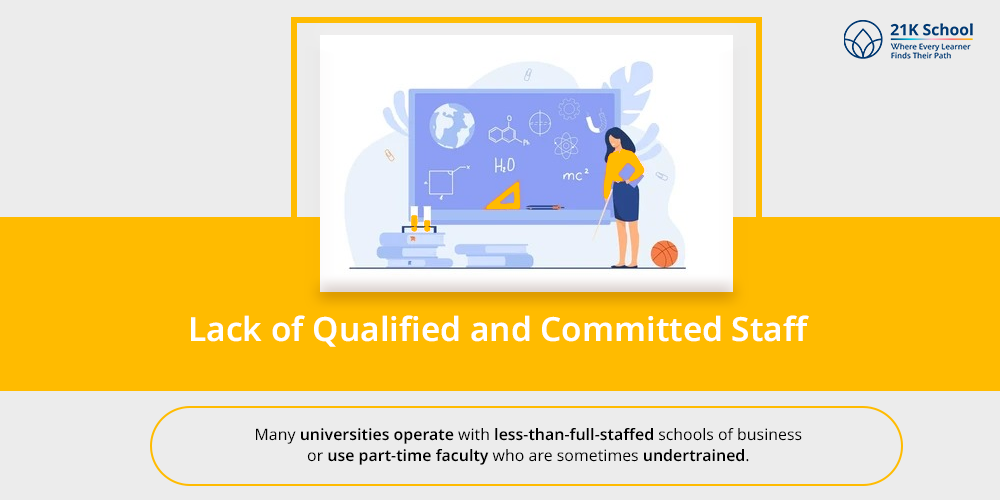
Many universities operate with less-than-full-staffed schools of business or use part-time faculty who are sometimes undertrained.
Even when instructors are full-time faculty members, they may not have current content knowledge or, if they do, be familiar with how it is applied in practice.
The quality of the learning experience will never be strong if no teacher is trained and passionate about both the content and inspiring students.
4. Poor Infrastructure in Colleges and Universities
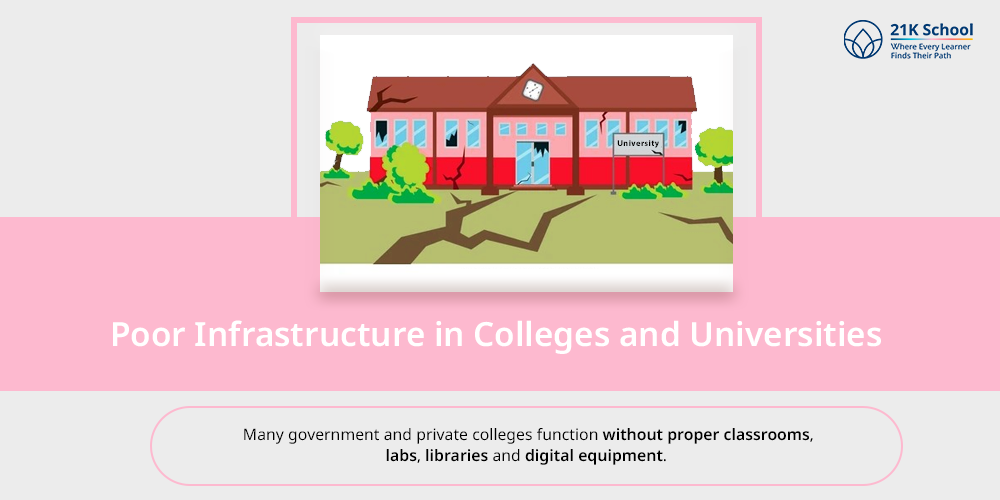
Many government and private colleges function without proper classrooms, labs, libraries and digital equipment.
Students, particularly in technical and medical courses, are faced with an absence of experience-based learning, which is critical to mastery.
A lack of hygienic hostels, sports facilities, and amenities for campus life affects overall student development and well-being. A shabby learning environment does not allow students to participate fully in their education.
5. Weak Industry-Academia Collaboration
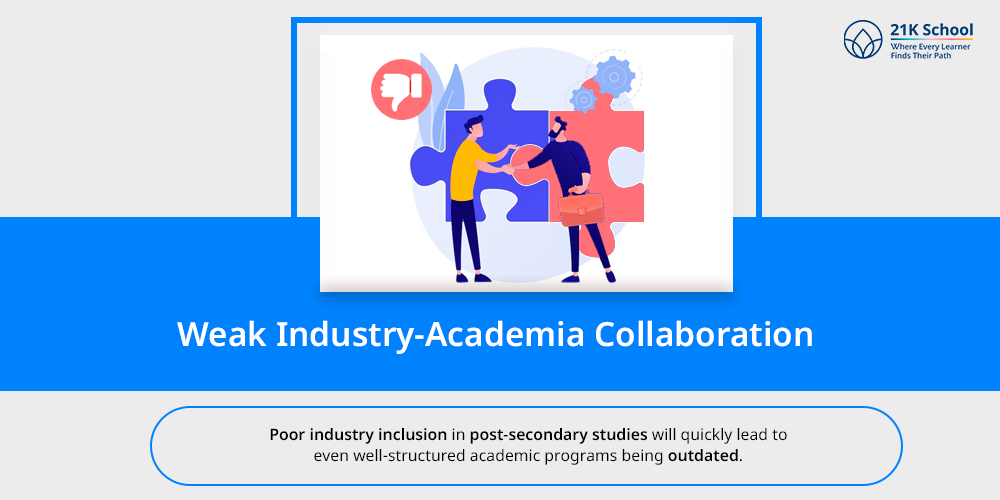
There is little collaboration between post-secondary institutions and industries, meaning that there are inadequate entry point opportunities for students to have real-world exposure in internships, live projects, or training from industry professionals.
Poor industry inclusion in post-secondary studies will quickly lead to even well-structured academic programs being outdated.
6. Low Focus on Research, Innovation, and Development
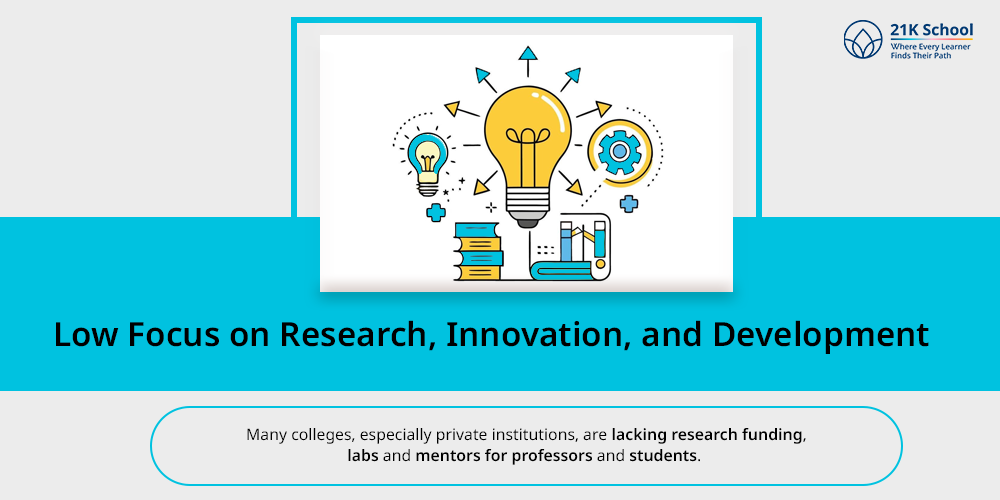
Many colleges, especially private institutions, are lacking research funding, labs and mentors for professors and students.
Even if there were better funding, the motivation to seek new ideas or projects is lacking. If India is to be effective in solving local and global issues through innovation, it must develop a strong research culture.
This has significant implications for India’s academic reputation globally and for measuring the level of scientific contribution by India.
7. High Rates of Graduate Unemployment
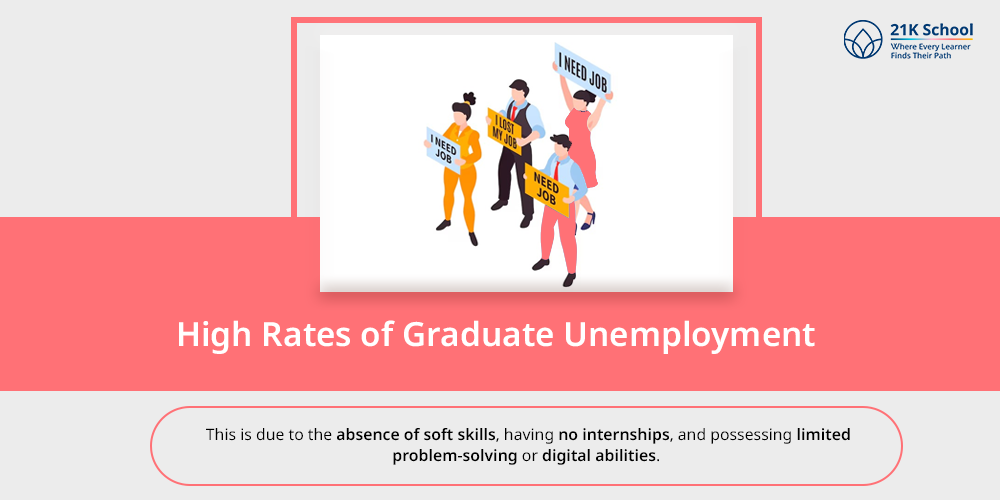
Many young graduates today are unemployed, or employed in jobs that do not reflect their qualifications, even though they have earned degrees.
This is due to the absence of soft skills , having no internships, and possessing limited problem-solving or digital abilities.
The problem of education and employability mismatch does not just impact individual careers, but the country’s economic growth and productivity as well.
8. Inequality in Access Based on Region, Caste, and Gender
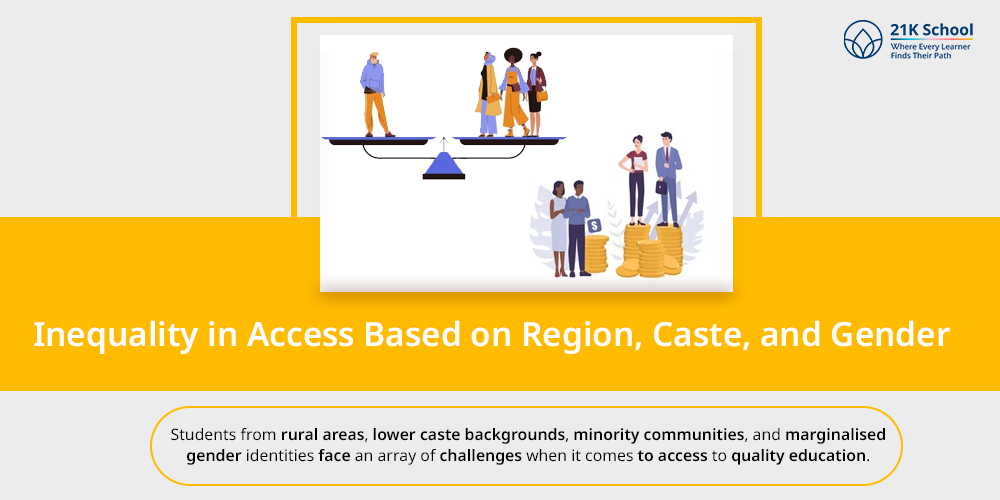
Students from rural areas, lower caste backgrounds, minority communities, and marginalised gender identities face an array of challenges when it comes to access to quality education.
These include socio-economic barriers (e.g., financial resources), socio-cultural challenges (e.g., familial expectations and cultural support), and a lack of knowledgeable guardians, cultural capital and preparedness in schools.
Even if they find their way to college, few have the support systems necessary to thrive in higher education. With issues like these rampant in the country, education equity becomes a far-fetched idea we can only dream of achieving.
9. Regulatory Bottlenecks and Policy Inconsistencies
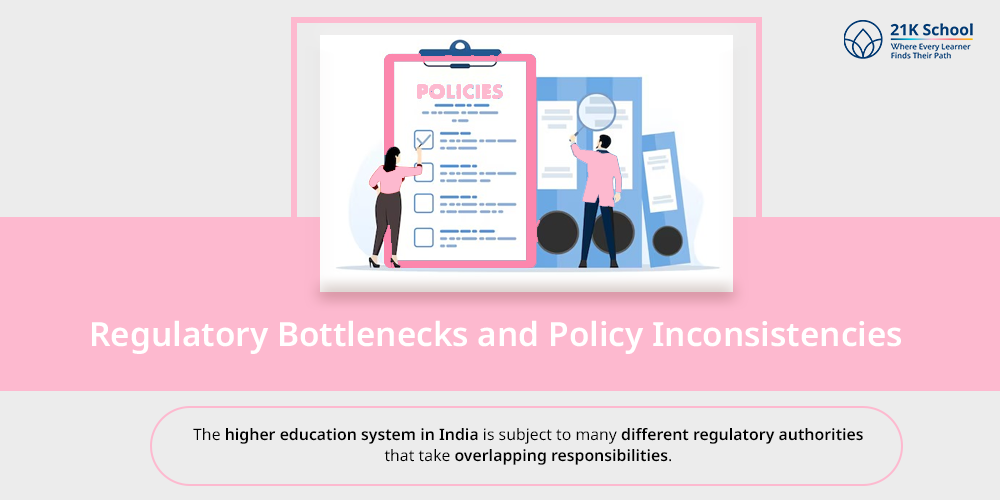
The higher education system in India is subject to many different regulatory authorities that take overlapping responsibilities.
This has resulted in bureaucratic inertia, inefficiency, and difficulty in managing cultural change.
Colleges have difficulty introducing new courses, collaborating internationally, and improving methods of teaching due to legislative and regulatory roles.
An efficient reform system can only be developed through simpler, less independent, and better accountable systems.
10. Digital Divide Hindering Online Education Expansion
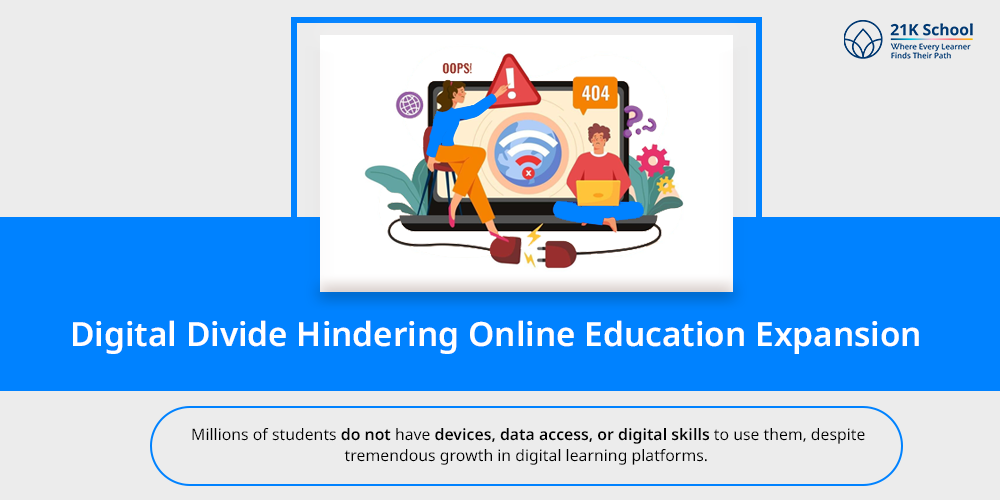
Millions of students do not have devices, data access, or digital skills to use them, despite tremendous growth in digital learning platforms. The digital divide was evident during the COVID-19 pandemic.
Students in rural households or from low-income households may miss online lectures, cannot complete virtual laboratories, and lack sufficient synchronous or asynchronous learning opportunities with educators.
11. Affordability

Private colleges, especially in areas such as engineering, medicine, and management, charge extremely high fees. This makes achieving sustainable education a long-drawn-out battle.
Many families take out loans or use their savings to pay for higher education, without any guarantee of getting their money back in the form of a future job.
This deters a lot of qualified students from continuing their college education.
Brain Drain: Why Talented Students Leave India
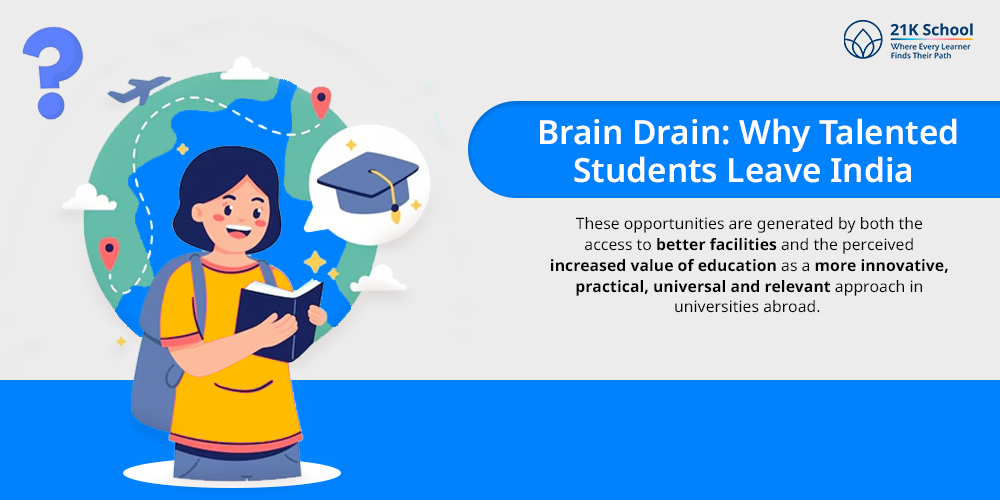
Each year, lakhs of Indian students head for further study abroad.
These opportunities are generated by both the access to better facilities and the perceived increased value of education as a more innovative, practical, universal and relevant approach in universities abroad.
Many of them never return to India, with significant high-calibre intellectual skills being lost to a brain drain.
To begin to reverse this trend, Indian institutions should improve their policies on access to quality education and provide degree programs that are competitive with those available to students globally.
The Need for Reforms in Higher Education Policy
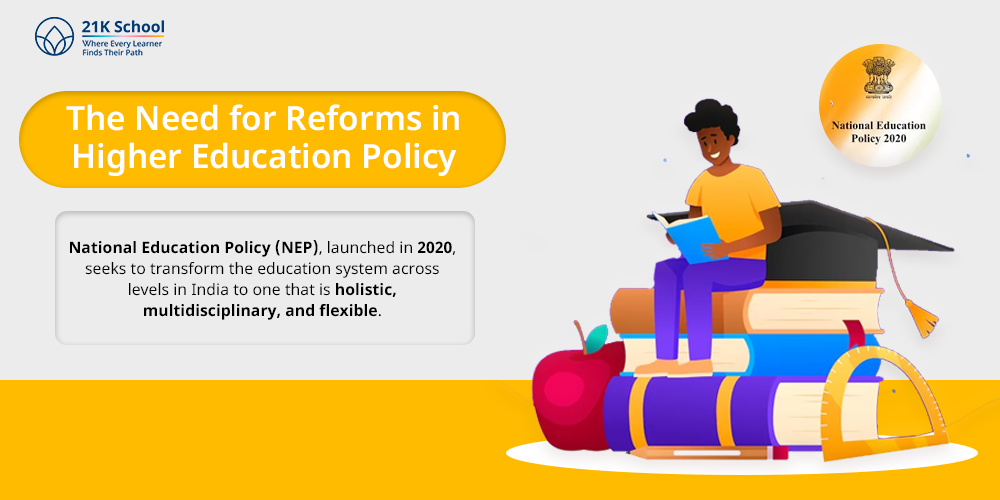
National Education Policy (NEP), launched in 2020, seeks to transform the education system across levels in India to one that is holistic, multidisciplinary, and flexible, to give as many opportunities for students and communities to achieve their potential for learning and growth.
This includes some proposed exit points, an emphasis on learning based on the competencies and skills in which students can demonstrate understanding and success, along with an academic bank of credits.
The success of the NEP is only possible if the changes proposed in the policy are implemented at the institutional level in a way that is faithful and true to the prescribed pace of change.
Role of Technology and Online Platforms in Bridging Gaps
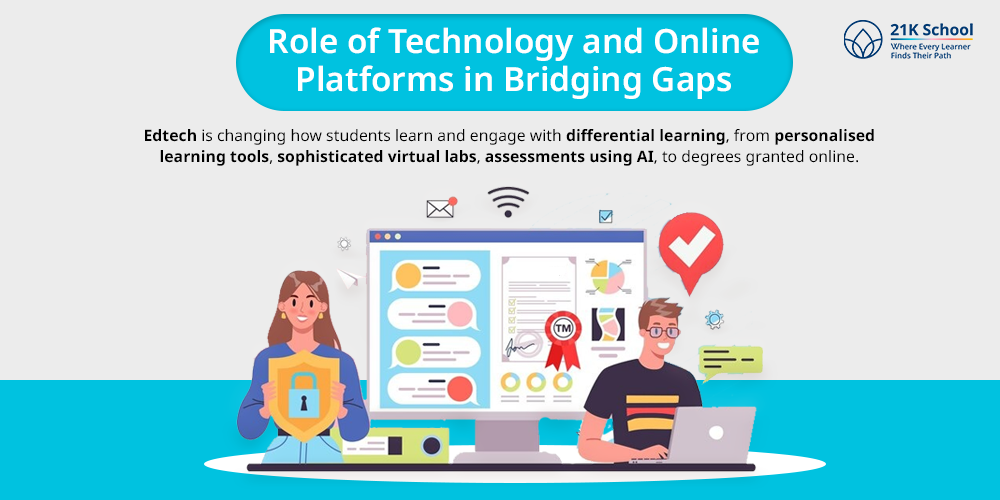
Technology in education offers a once-in-a-lifetime opportunity to address many issues faced in higher studies.
Edtech is changing how students learn and engage with differential learning, from personalised learning tools, sophisticated virtual labs, assessments using AI, to degrees granted online.
Further, students can now gain access to quality content from anywhere in the world by taking advantage of multiple platforms such as SWAYAM, Coursera, Khan Academy, etc.
The pathways for properly scaling the implementation of the use of online education technology must include a variety of stakeholders, such as the government, private organisations and educators working together as partners.
Conclusion: The Future of Higher Education in India
India is at a point where the quantity of higher education is too normative. It is time to rethink education; now, quality, inclusiveness and relevance must be the focus.
Recognising and addressing systemic problems will require much more than policy modifications and making the option of higher education accessible; it requires a change in mindset, strategic investment in innovation, and the collaboration of government, educational institutions, and industry to reconfigure their respective roles.
The higher education system can invigorate youth, create a more corporate innovation approach, and build an entrepreneurial vision for sustainable employment advancement in India.
Your next read: Benefits of Higher Education

